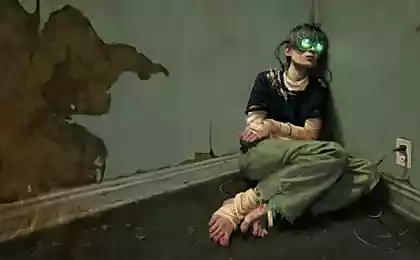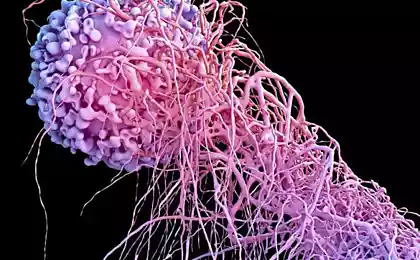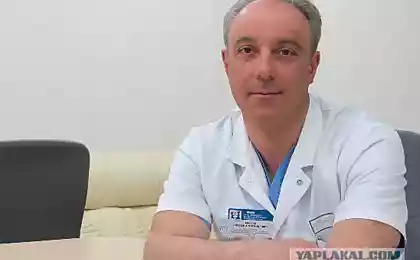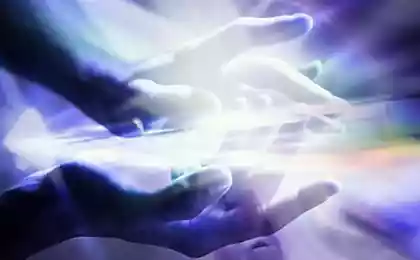495
Dialogue with Death as a way of overcoming the existential crisis in cancer patients
Many people see death as a frightening event that causes the fear, and avoid openly and calmly look her in the face, talking about it — if it does not exist. The theme of death for a significant number of people closely associated with loneliness and anonymity and painted a lot of negative emotions.
In psychology, fear of death is existential, "normal" and is a frequent and natural theme for thought and inner experiences. Death is one of the four ultimate realities, global themes, which, along with freedom, existential isolation and meaninglessness are considered by psychologists and therapists in the various categories of patients.

In working with people who have experienced loss, as well as with patients experiencing cancer, this fear becomes much more meaningful, intense, becomes the dominant character and often becomes the Central experience of human suffering.
In severe somatic disease it is possible to observe the start of the process of grief described in the literature. Occur in cancer patients and patients with severe somatic pathology is subjective hard to bear experiences cannot be left without consideration. It is necessary to create a certain algorithm of practical psychotherapeutic work with pessimistic attitudes and experiences.
From my own experience of psychotherapeutic support this category of patients, it may be noted that the integrated psychotherapy focused on depressive feelings should be directed at achieving the following set of tasks:
Development (speech) traumatic experiences. Support and resourceaware patients. Psychotherapeutic work with existential experiences. Psychotherapeutic support whole period of the disease and experiences associated with it. In the process of a comprehensive psychotherapeutic work with the existential experiences of cancer patients one of the key techniques is the technique of "Dialogue (meeting) with Death." It can be performed in several modes.
Practical experience of application of this technique showed that the most effective forms of its application is to work with the "empty chair" or the game version of the drama sessions using small toys-substituents ("kinder-surprise therapy").
In the beginning of the therapeutic session is very important to create an atmosphere of friendly acceptance, cooperation. After creating a security zone with a patient he briefly explained that there would be a study designed to study fears and feelings about his illness.
Then the patient is encouraged to create an imaginary place where there will be a meeting and dialogue with the intimidating topic of illness and death.
In this space is a dialogue in which the patient is alternately to stay in their role (tracking your feelings in relation to death) and then, change of position, to take on the role of Death. When dialogue takes place several transitions from one role to another, clarifies the relation to the theme of illness and death, there is an opportunity to respond to his feelings and fear.
Observations show that the implementation of patient equipment "Dialogue with Death" can go in two ways — harmonious and disharmonious.
The harmonious variant is observed the neutral position of Death as Givens. Death in this role has the character of a one-piece mono-figure that wanted with statements like: "I am. I exist. Feel any do not feel, do not want, do not ask...". With this role figure pretty quickly line up a constructive relationship.
In the process of transition from one role to another sometimes the figure of Death begins to "split", there are the ways of death, similar to the personalities of the patient and his introjected (usually a parent). Then we can talk about disharmonious response option.
If disharmonious, the complicated structure of the figure of Death, she can manipulate the patient to insist on the implementation of their various needs. For example, in the statements of patients with this variant of the "Dialogue" are typical the following message: "I control you...", "...you should fear me...", "...I eat so...".
The complex structure of Death in disharmonious (manipulative) version includes both the very figure of Death and a few additional pieces of the patient's needs, not implemented adequately. Death in this case can be viewed as "glued" symptom.
Our task is to "unraveling" of this symptom, identifying hidden needs, their clarification and satisfaction. Working with manipulative, intimidating messages to parts of the figure of Death helps the patient in new ways to rethink their feelings towards death and allows you to continue to dialogue with moneyguru.
As a result of this technology, you can move on to building a constructive relationship with Death as a reality and to get a result researched the experience of overcoming a crisis of existential experiences.published
Authors: Marina Ivashkina, candidate of psychological Sciences, associate Professor, head. the Department;
Esaulov Vladimir, assistant, Department of psychotherapy, psychological-social faculty
P. S. And remember, only by changing their consumption — together we change the world! ©
Join us in Facebook , Vkontakte, Odnoklassniki
Source: www.ustinova.info
In psychology, fear of death is existential, "normal" and is a frequent and natural theme for thought and inner experiences. Death is one of the four ultimate realities, global themes, which, along with freedom, existential isolation and meaninglessness are considered by psychologists and therapists in the various categories of patients.

In working with people who have experienced loss, as well as with patients experiencing cancer, this fear becomes much more meaningful, intense, becomes the dominant character and often becomes the Central experience of human suffering.
In severe somatic disease it is possible to observe the start of the process of grief described in the literature. Occur in cancer patients and patients with severe somatic pathology is subjective hard to bear experiences cannot be left without consideration. It is necessary to create a certain algorithm of practical psychotherapeutic work with pessimistic attitudes and experiences.
From my own experience of psychotherapeutic support this category of patients, it may be noted that the integrated psychotherapy focused on depressive feelings should be directed at achieving the following set of tasks:
Development (speech) traumatic experiences. Support and resourceaware patients. Psychotherapeutic work with existential experiences. Psychotherapeutic support whole period of the disease and experiences associated with it. In the process of a comprehensive psychotherapeutic work with the existential experiences of cancer patients one of the key techniques is the technique of "Dialogue (meeting) with Death." It can be performed in several modes.
Practical experience of application of this technique showed that the most effective forms of its application is to work with the "empty chair" or the game version of the drama sessions using small toys-substituents ("kinder-surprise therapy").
In the beginning of the therapeutic session is very important to create an atmosphere of friendly acceptance, cooperation. After creating a security zone with a patient he briefly explained that there would be a study designed to study fears and feelings about his illness.
Then the patient is encouraged to create an imaginary place where there will be a meeting and dialogue with the intimidating topic of illness and death.
In this space is a dialogue in which the patient is alternately to stay in their role (tracking your feelings in relation to death) and then, change of position, to take on the role of Death. When dialogue takes place several transitions from one role to another, clarifies the relation to the theme of illness and death, there is an opportunity to respond to his feelings and fear.
Observations show that the implementation of patient equipment "Dialogue with Death" can go in two ways — harmonious and disharmonious.
The harmonious variant is observed the neutral position of Death as Givens. Death in this role has the character of a one-piece mono-figure that wanted with statements like: "I am. I exist. Feel any do not feel, do not want, do not ask...". With this role figure pretty quickly line up a constructive relationship.
In the process of transition from one role to another sometimes the figure of Death begins to "split", there are the ways of death, similar to the personalities of the patient and his introjected (usually a parent). Then we can talk about disharmonious response option.
If disharmonious, the complicated structure of the figure of Death, she can manipulate the patient to insist on the implementation of their various needs. For example, in the statements of patients with this variant of the "Dialogue" are typical the following message: "I control you...", "...you should fear me...", "...I eat so...".
The complex structure of Death in disharmonious (manipulative) version includes both the very figure of Death and a few additional pieces of the patient's needs, not implemented adequately. Death in this case can be viewed as "glued" symptom.
Our task is to "unraveling" of this symptom, identifying hidden needs, their clarification and satisfaction. Working with manipulative, intimidating messages to parts of the figure of Death helps the patient in new ways to rethink their feelings towards death and allows you to continue to dialogue with moneyguru.
As a result of this technology, you can move on to building a constructive relationship with Death as a reality and to get a result researched the experience of overcoming a crisis of existential experiences.published
Authors: Marina Ivashkina, candidate of psychological Sciences, associate Professor, head. the Department;
Esaulov Vladimir, assistant, Department of psychotherapy, psychological-social faculty
P. S. And remember, only by changing their consumption — together we change the world! ©
Join us in Facebook , Vkontakte, Odnoklassniki
Source: www.ustinova.info























